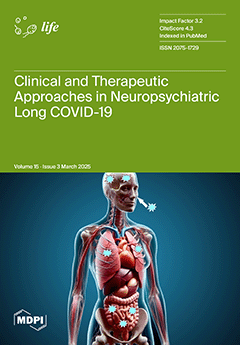Background: Herein, we review the Cotton Top Tamarin (CTT),
Saguinus oedipus, a unique spontaneous model for colorectal cancer (CRC). Despite its predisposition to inflammatory bowel disease (IBD) and frequent development of CRC, the CTT is adept at avoiding colorectal metastasis in the liver. In contrast, the common marmoset (CM),
Callithrix jacchus, is a natural negative control, in that it also contracts IBD, but usually not CRC. We review our findings in these New World monkeys in terms of the expression of CEACAM adhesion models and their related molecules to contrast them with human disease.
Methods: Specimens were collected from aforementioned monkey colorectal and other tissues, colonic washings, serum for analysis of tissue extraction, and colonic washings via ELISA, using a battery of antibodies. Fixed tissues were analyzed using immunohistochemistry and CEACAMs were extracted via Western blotting. Serum CEA levels were analyzed using ELISA, and DNA was extracted via a Bigblast genomics sequencing kit.
Results: Serum CEA was significantly elevated in CTTs, and one-third of them die from CRC. Unlike others, we were unable to stain for CEA in tissues. The sialylated carbohydrate antigen recognized by monoclonal antibody (MAb) SPAN-1 does stain in 16.7% of CTT tissues, but the anti-aminoproteoglycan MAb, CaCo.3/61, stained 93.3% (OR70·00[CI6.5–754.5]
p < 0.0001). The common CEA kits from Abbott and Roche were non-conclusive for CEA. We later adopted a CEA AIA-PACK from Tosoh Medics, which identified a 50 Kda band via Western blotting in humans and CTTs. The CEA levels were higher using the CEA AIA-PACK than the Pharmatrope kit (932 ± 690 versus 432 ± 407 ng/mL (
p < 0.05)) in human patient colonic effluent, not statistically significant (NSS) for CTT extracts or effluent (733 ± 325 and 739 ± 401 ng/mL, respectively). It was suggested that the smaller CTT CEA moiety might lack components that facilitate the spread of liver metastasis. Later, using more specific CEA assays and increased numbers of specimens, we were able to show higher CEA serum expression in CTTs than in CMs (632.1 ± 306.1 vs. 81.6 ± 183.6,
p < 0.005), with similar differences in the serum samples. Western blotting with the anti-CEA T84.66 MAb showed bands above 100 KDa in CTTs. The profiles in CTTs were similar to human patients with inflammatory bowel disease. We established that the CEA anchorage to the cell was a GPI-linkage, advantageous for the inhibition of differentiation and anoikis. With further CEA DNA analysis, we were able to determine at least five different mechanisms that may inhibit liver metastasis, mostly related to CEA, but later expanded this to seven, and increased the relationships to CEACAM1 and other related molecules. Recently, we obtained CTT liver mRNA transcriptomes that implicated several pathways of interest.
Conclusions: With efforts spanning over three decades, we were able to characterize CEA and other changes that allow us to better understand the CTT phenomenon of liver metastasis inhibition. We are in the process of characterizing the CTT liver mRNA transcriptome to compare it with that of the common marmoset. Currently, liver CTT gene expression patterns suggest that ribosomes, lipoproteins, and antioxidant defense are related to differences between CTTs and CMs.
Full article






